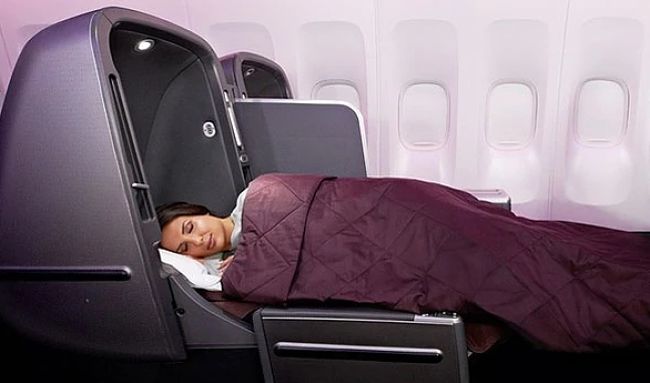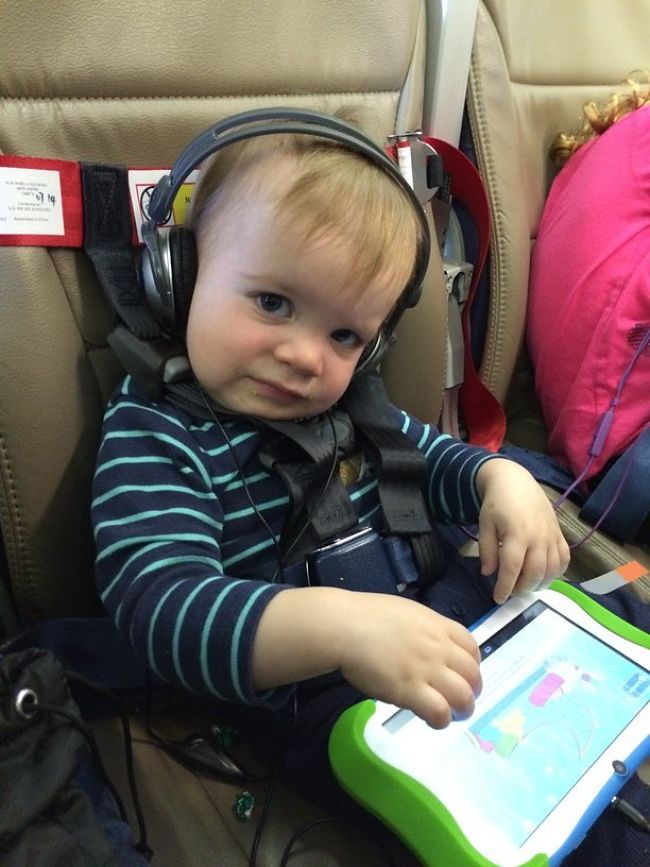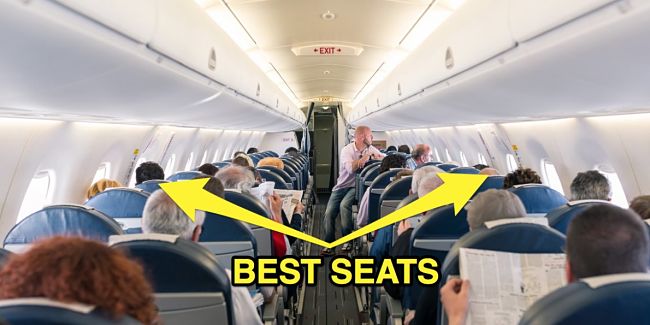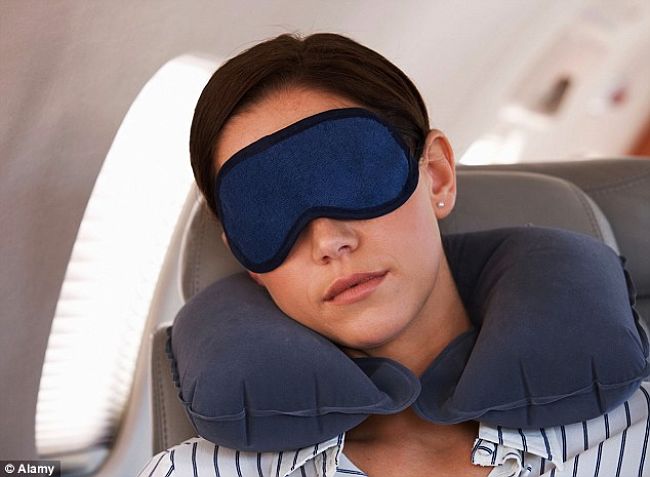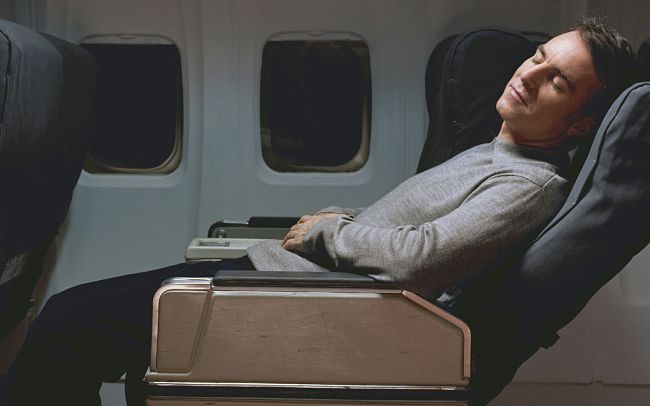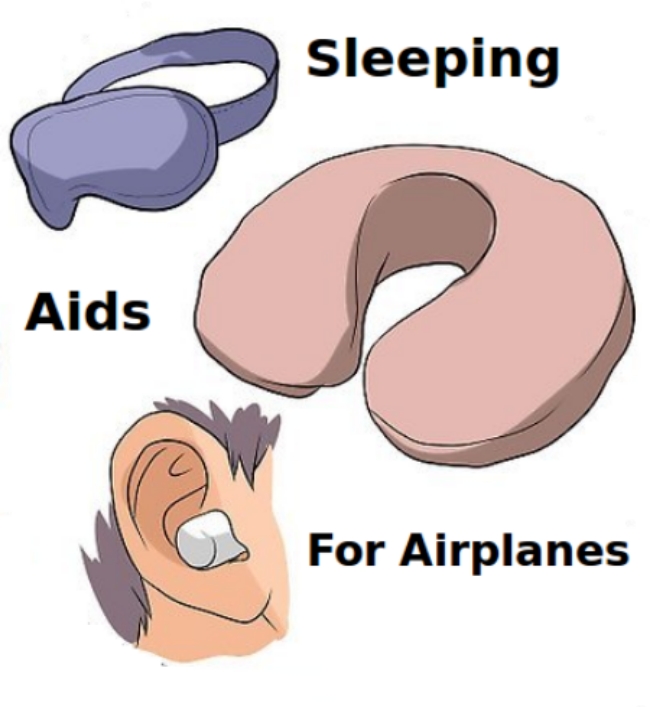Sleeping on Airplanes - Tips for Decent Sleeps, Naps on Long Flights
Let's face it, airplanes are not the best places to get some shut eye, as there are so many distractions and the seating and environment are not really designed for sleeping. Yet sleep is very important, especially on long flights.
There are many things that stop you napping or sleeping properly on long journey. This makes jet lag worse and makes you over-tired when you arrive at your destination.
Some sleep-blockers are: not enough legroom, people moving around in the cabin or climbing over you; sunlight streaming in the window; noise from video games and movies; screaming children; loud conversations; meals, drinks and snacks, disturbing changes in engine noises.
So apart from going first class, with proper sleeping facilities, what can you do? The good news, especially for business travellers, is that choosing the right seat, having the right equipment, making the right preparations before the flight, and changing some of your flying habits could help you sleep more soundly on your next flight.
This article discusses the best tips for restful sleeping on airplanes.
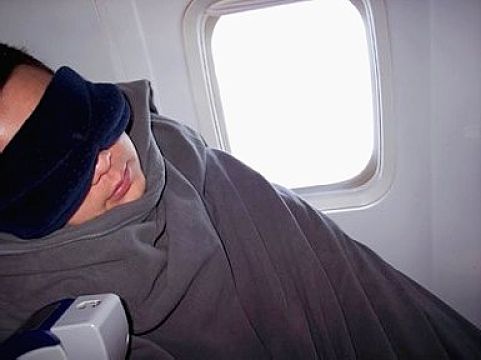
Best Tips for Sleeping on Airplanes
Choose your Seat Locations in the Plane Wisely
Your seat location can affect your ability to sleep:
- Choose a window seat as it lets you prop your head against the window or cabin wall. You control the curtain. People won't be scrambling over you
- Avoid the exit row seats or bulkhead. They do provide extra legroom but often these seats can't be reclined and some don't have adjustable armrests. These seats are often et aside for families traveling with young kids and babies.
- Stay away from the last row of the plane if you can avoid it. The seats may not recline, and they may be right next to the lavatories, and galley.
- Choose a seat with maximum leg room if you can find one.
Avoid having extra carry-on bags stored under your feet
If you have two full carry-ons bag you may be tempted to store it under your feet. But the limited legroom becomes uncomfortable after a while and its much harder to sleep. Keep to a single bag and carefully pack it so everything you need during the flight is at the top. This may include a book or magazine, traveling pillow, eye shades, a snack and a bottle of water. Some of these items can be stored in the back of the seat in front of you if this is permitted.
Avoid coffee, tea and soft-drinks laden with caffeine
This is common sense but does vary between individuals. Work out how long you need between the last cup of coffee and when you intend to sleep. Usually this is about four hours. Avoid drinking a cup of coffee or caffeinated soft drinks soda before boarding if you intend to sleep an hour or two after boarding.
Get in early to get the blankets and pillows you need
There are never seems to be enough pillows and blankets left when you need them. Get in early and stake your claim. Ask the flight attendant to supply them if there are none in your area.
Try using a neck pillow
Some people like them,others not. But they are worth a try. If they work for you, they can be very beneficial. Many find that they are too large and caused the head to tilt too far forward. Most don't offer any support under your chin. Explore the many different types available and see what works for you.
Free your feet by removing your shoes
This topic is controversial because there is a lot of opinions about whether it is appropriate or not. Some people like slip their shoes off every time they fly for the whole journey as the find it more comfortable. Others consider it rude and object to the smell etc. Others argue that while it may be more comfortable it may be detrimental as it allows your feet to swell. If you intend to take your shoes off, make sure you wear clean socks. Wear shoes you can slip off and on, easily if you have to move about the cabin. You may want to bring your own slippers. On many overseas flights, some airlines issue socks to help keep your feet warm and maintain blood circulation in your feet and lower limbs.
Try a sleeping pill or herbal aid
There are too many options to discuss here. Taking these drugs and various herbal remedies is your decision. The common drugs that many people take are shown below simply as examples, not as recommendations.
Melatonin is a naturally occurring substance that is linked with triggering your natural our sleep patterns. Responses vary.
Dramamine is an over-the-counter motion-sickness remedy that induces sleep, but it can be too powerful in some people.
Use your own headphones and Noise Cancelling Devices
Listening to familiar soothing music can help you overcome distractions and cabin sounds. Choosing your own music on an iPod, iPhone (or other portable music device) is a great way to block out the noise around you. For best results, create a playlist purely for sleeping and blocking out background noises. You can set a timer to switch it off once you get to sleep.
Foam Earplugs and Noise-Canceling Headphones
The special noise-canceling headphones are expensive but very effective. Ear plugs are much cheaper but are much less effective in eliminating local noise.
Recline your seat, but be courteous to those behind you
Simple common courtesy applies here. Always look behind you and give the person there a hint that you want to lean back. Take care if clear if the person behind has a coffee in front of them or they have their tray table down. You may need to ask them first.
Tell the Flight Attendant that you don't want to be disturbed.
Notifying your flight attendant when you want to sleep so he or she won’t disturb you went the drinks or snack cart comes around. If you cover yourself with a blanket, make sure the seat belt is buckled over the top of it so the belt is visible. This will stop you being disturbed if the ‘fasten seat belts’ sign is displayed and the flight attendant has to check.
Keep away from videos and all forms of light
Any variable light such as the flash of movie screens, cabin lights, reading lights, sunlight streaming in the windows can all disturb your sleep, especially if it changes in intensity. Try using a good quality and well fitted eye mask. Some airlines provide them, but these ones are seldom comfortable and adequate. It is best to have your own.
Learn to Relax
Similar to when you are at home stress, pressure, anxiety and dwelling on unresolved problems will keep you awake on the plane. Learn to clear your mind so you can relax and sleep. Even if you are on your way to an important business meeting, set aside some time to do the final preparations so you can sleep in the meantime.
Remove Contact Lenses
Fly with your contact lens removed, and use your glasses instead. Plane air is often very dry and it is hard to sleep comfortably wearing contact lenses. It’s OK for some people.
Dress Comfortably
Having a comfortable change of clothes in your carry-on bag for longer flights can be very helpful. These are your sleeping clothes, rather than the clothes worn for the flight. Have layers so that you can adjust what you are wearing for adjustments in the plane's climate control system. It is surprising how much conditions change and your own feelings about the temperature where you are seated. Choose your in-flight set of clothes for comfort, that is lightweight loose fitting and that breathes.
Have One or Two Drinks
Having too many drinks will put you to sleep but you will not sleep for long and you will not feel rested after waking up several times to go to the lavatory and deal with dehydration and headaches. But one or two drinks often helps you relax and feel drowsy.
Eat light, well and watch what you drink
Avoid coffee and black tea. Remember that even green tea, some herbal teas and many soft drinks contain caffeine. For hot drinks choose caffeine-free herbal tea such as peppermint or chamomile tea. Take some of your favorite brands of teabags and ask the cabin crew for some hot water.
The large, fat and carbohydrate rich meals that many airlines provide can prevent you from sleeping. You may feel bloated and have trouble digesting it. Only eating a small amount of food is good as it helps to make you feel relaxed. Look to eat a second entrée or snacks instead of the main meal. Much of the food supplied may not suit you. For long flights pack some low-calorie protein bars that you like for snacks. Also remember to pack a few snacks such as trail mix, dried fruit, cheese-snacks. Don’t eat lots of food expecting that this will help you to sleep.
How to Wake Up Gently
When you get to sleep the worst part may be waking up, rather than the sleep itself. Worrying about this can keep you awake. Set an alarm to awaken you 30-45 minutes before you land. That gives you time to go to the restroom, tie your shoes, gather all your gear and pack it back into your bag, and even get a cup of coffee so you are fully awake when you are ready to get off the plane.
